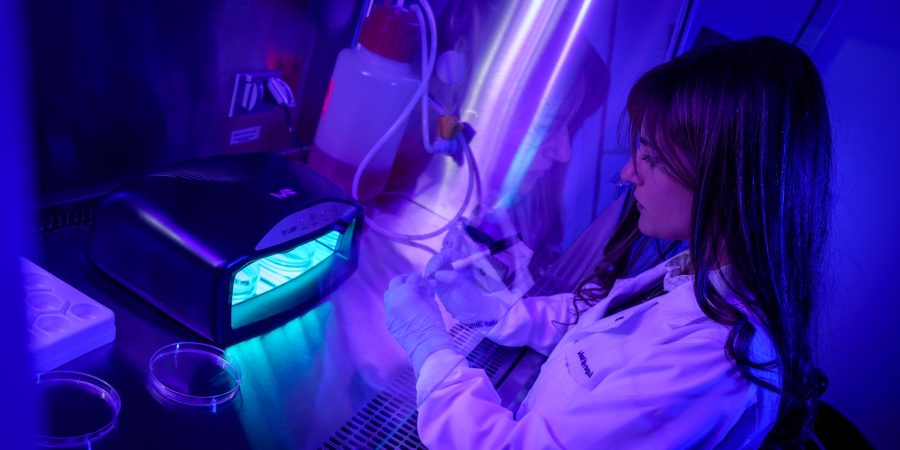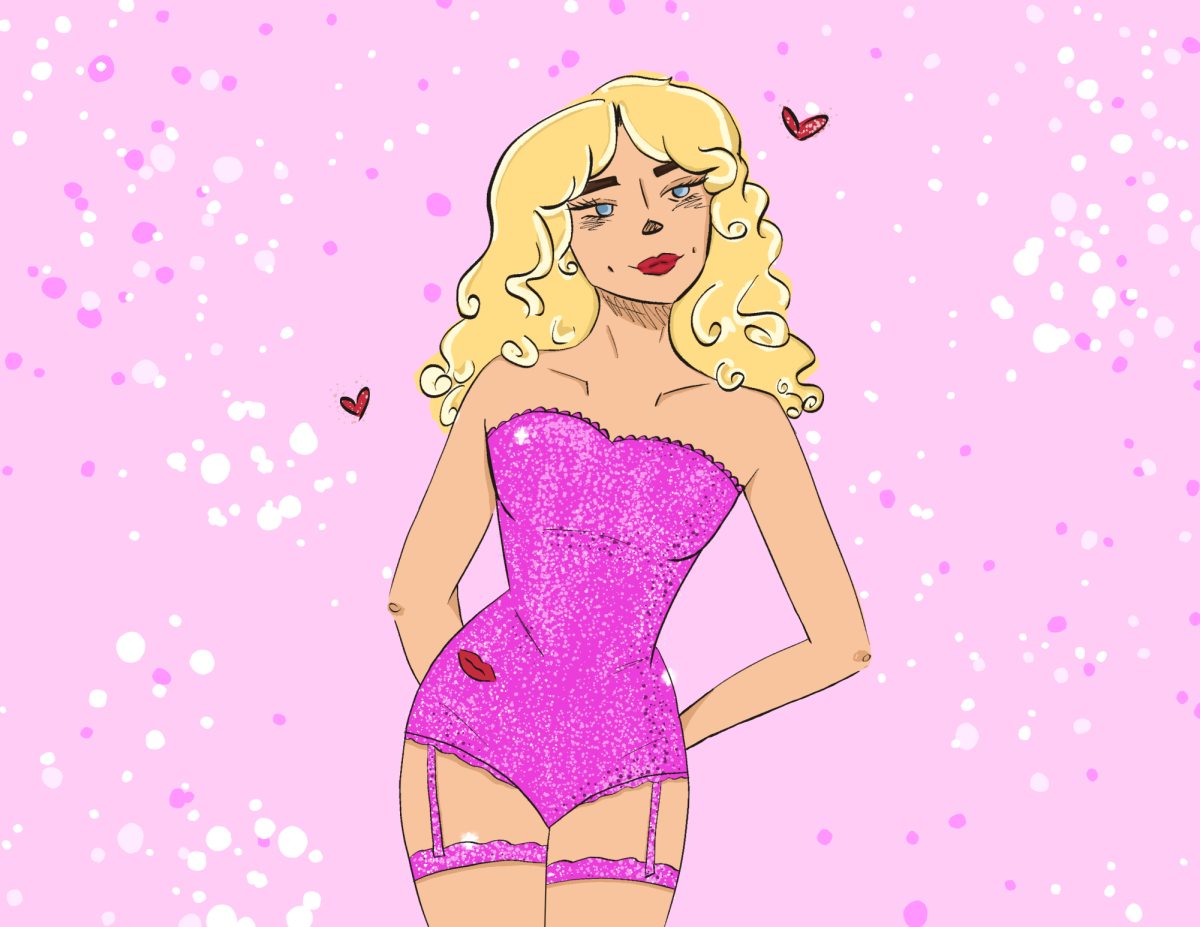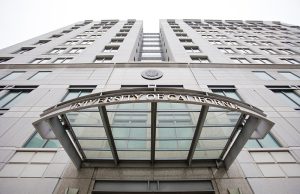UCSD Researchers find UV Nail Polish Dryers Damage DNA, Cause Mutations
Photo by UCSD Jacobs School of Engineerin/ UCSD Guardian
Feb 20, 2023
Irradiation from ultraviolet nail polish dryers used to dry and cure gel nails may increase the risk of developing skin cancer, researchers from the University of California posit in a report published last month. Their findings show that the artificial UV-A light emitted from these common devices is more harmful than previously understood.
Gel nail polish dryers and other UV devices often use light with UV-A wavelengths. This is because, while sunlight emits full spectrum UV light — including UV-A and UV-B wavelengths — the latter had been proven to directly damage and alter DNA. By avoiding the use of UV-B light in favor of UV-A, which had not been linked to direct DNA damage, it was believed UV devices were safe for use. Newfound research by UC San Diego scientists suggests otherwise; UV-A light has been found to indirectly damage DNA.
“With UV-B, it’s a one-step process; UV-B directly affects the DNA,” Assistant Teaching Professor of Neurobiology Dr. Melinda Owens explains. “What [they] found here is that with UV-A, it’s a two-step process; UV-A damages mitochondria, making them release reactive oxygen species.” Mitochondria are known to produce energy for the cell, but they also perform numerous other functions to reach homeostasis, like programmed cell death.
“The reactive oxygen species are damaging the DNA,” Owens continued. “This is important. Because … a lot of products use UV-A under the assumption that it’s safe, [and] that it doesn’t lead to cancer. They are saying, ‘Let’s back up. That’s not true.’”
Lead author of the study Dr. Maria Zhivagui, a postdoctoral scholar of environmental toxicology specializing in cancer research, describes these aforementioned reactive oxygen species as dangerous when released by the mitochondria, rendered dysfunctional by the UV-A dryer.
“Reactive oxygen species … are small, very tiny molecules that have a really high energy,” Zhivagui said. “They’re usually charged. And they can attack everything in your cell, all the compartments in the cell; they can attack the protein, the DNA, the RNA, [and] the lipids.”
This, both Owens and Zhivagui remarked, is called oxidative, or stress, damage. Zhivagui and her team recognized that the oxidative damage was linked to mitochondria dysfunction, inhibiting the cell from repairing itself. This leads to DNA damage, particularly to the production of proteins, Owens explains. Further, the irradiation from UV nail polish dryers can cause so much damage that cells die.
“There was a huge amount of DNA damage that happened to the cell that caused it to die. When we saw the cell death, we wanted to understand why,” Zhivagui explained.
Cell death on its own is not harmful, Owens stated. But when coupled with too many mutations or too much damage, such as with UV nail dryers, it can be indicative of a larger issue.
“Cell death is a natural process,” Owens said. “But it can be [bad] if too many cells die or if the wrong cells die.”
This damage to the cell’s components can also lead to mutations.
“What we see at this point is that some cells die, while some cells remain alive and active,” Zhivagui said. “When we look at these alive cells, they’re not really functioning properly as normal cells because they have these huge molecules that are kind of toxic [and] induce harm on your DNA … that [lead] to mutation induction … There was an increased number of mutations in exposed samples compared to the control.”
Zhivagui also shared that the cells all mutated in a similar way, something that is not uncommon enough to provide a direct link to the effects of the UV nail polish dryer. “Basically, different sources … cause different chemical effects on the DNA,” Owens explained. “So they cause different kinds and different patterns of mutation.”
According to the report, there are about three million people attending nail appointments daily in the United States. The researchers determined that clients who regularly get gel nails do so about every two weeks. These regular clients are at greater risk for cell death, mutations, and mitochondria dysfunction. However, although Zhivagui and her team focus on damage caused by prolonged use of these UV nail polish dryers, they found that exposure for short periods of time can also damage cells.
“We tested twenty minutes of exposure for mutation induction, but we also checked within two minutes and five minutes,” she said. “Even after five minutes of exposure to these machines can engender and cause up to around 10% cell death ... That was really concerning.”
The device the researchers used, however, was not professional grade — Zhivagui bought them online.
“[It] was from Amazon, and this is a machine that anybody can purchase for in-home usage,” she said. “We know the machines at salons most likely have a higher energy. The UV light [in those] is more potent.” This, she clarified, meant that the results would likely be stronger in the case of UV devices found in salons.
Their findings impact more people than just nail salon goers. Owens applauds this research for its far-reaching applications saying, “There’s this bigger story about UV-A, how people didn’t quite realize how carcinogenic it was, and how it can cause cancer. That’s a broader issue.”
Zhivagui touched on some of these applications, such as UV lamps used by dentists for fillings as well as those used for hair loss treatment.
“You have UV lamps used in dentistry for curing your fillings, [and there] are some for hair treatments … for hair loss,” Zhivagui asserted.
However, both Zhivagui and Owens posited that the risk of cancer is greater depending on the level of radiation and cumulative damage from regular exposure to such devices.
“If you only get a filling once every couple of years, it’s probably not a big deal,” Owens stated. “A lot of this is dose-dependent. So, go, and get your filling if you need it — it’s better than having a rotten tooth.”
In comparison to, say, getting dental fillings, salons repeatedly expose regular clients seeking gel nails to UV-A. “The salons are using these high-powered [nail polish dryers] to get things done quickly.” Owens said.”You have to start thinking, ‘Okay, is this worth it?’ You have to think about what the risks and benefits are.”
For someone who may not want to give up getting gel nails done, Zhivagui has some tips.
“My advice would be to limit exposure … Don’t get it as often,” she said. “You can also use preventative measures. For example, you can use protective gloves [which come] with the fingertips exposed. And definitely [use waterproof] sunscreen with SPF 30 and above, preferably SPF 50 to protect the hands … 20 minutes before going into the machine.”
These are recommendations, she reminds users, that medical and public health professionals already advise when leaving the home to protect against the sun’s UV rays.
While groundbreaking on its own, Zhivagui explains that further research is necessary to strengthen the study’s findings. For example, she suggested epidemiological studies with human subjects, instead of experimental samples, to provide stronger evidence linking cancer to artificial UV devices. Such experiments, however, would take a long time to complete, and by then many people will have been exposed to artificial UV lights that emit UV-A, putting them at risk of developing cancer. In Zhivagui’s eyes, the answers that arrive after decades of studies might provide help too little and too late for all with years of exposure to UV machines.
When asked what her goal for her work was, Zhivagui answered, “I hope to help contribute more to this field, to better inform the public,” with a smile. “It’s good to educate people. Let them, by themselves, weigh the risk … This is my motivation in life: I wish for humans to live much longer, in a better environment and [with] a healthier lifestyle.”
Photo courtesy of UC San Diego Today. Dr. Maria Zhivagui, a postdoctoral scholar in the Alexandrov Lab, prepares human cells in Petri dishes for exposure to the manicure-curing device.
















